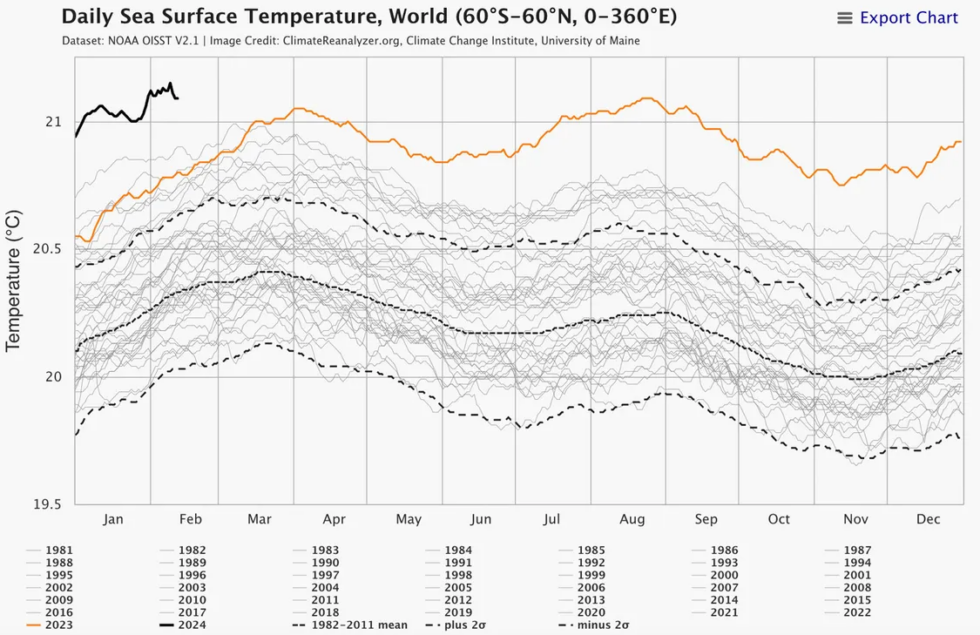
Enlarge (credit: jay_zynism via Getty)
For nearly a year now, a bizarre heating event has been unfolding across the world’s oceans. In March 2023, global sea surface temperatures started shattering record daily highs and have stayed that way since.
You can see 2023 in the orange line below, the other gray lines being previous years. That solid black line is where we are so far in 2024—way, way above even 2023. While we’re nowhere near the Atlantic hurricane season yet—that runs from June 1 through the autumn—keep in mind that cyclones feed on warm ocean water, which could well stay anomalously hot in the coming months. Regardless, these surface temperature anomalies could be triggering major ecological problems already.
“In the tropical eastern Atlantic, it’s four months ahead of pace—it’s looking like it’s already June out there,” says Brian McNoldy, a hurricane researcher at the University of Miami. “It’s really getting to be strange that we’re just seeing the records break by this much, and for this long.”
Read 14 remaining paragraphs | Comments
Ars Technica - All contentContinue reading/original-link]





